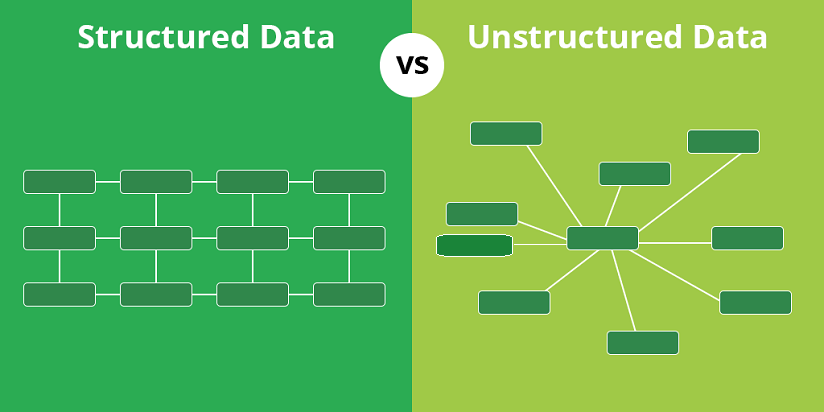Difference between structured data & unstructured data

Collecting and analyzing data plays a crucial role in the digital marketing world. So many businesses and enterprises emphasizing data collection that’s why it’s important to take a closer look at the forms that data come in. Basically, there are two types of data that businesses usually collect. They are structured and unstructured data and these two make up the sum of an organization’s data collection.
Therefore, both these types of data are essential in the modern digital enterprise; however, you must learn to manage them differently. This article will help you understand the difference between these two. So, keep reading to get the most out of both of them. Let’s tackle them one by one.
What is structured data?
As the word structure itself suggests the data which is highly organized and neatly formatted. It is a type of data which can be put into table and spreadsheets. This data is also referred to as quantitative data. Most businesses collect transactional data as structured data which includes financial information which meets compliance standards. The best example of structured data is Consumer data.
Some more examples included in structured data are credit card numbers, financial amounts, dates, phone numbers, addresses, product names, etc.
What is unstructured data?
As the word indicates, unstructured data isn’t organized or properly formatted. It is a significant challenge to collect, process, and analyze unstructured data. The unstructured data is also called qualitative data which covers everything that structured data doesn’t. Unstructured data grows larger every year and it becomes difficult for companies to manage.
Some examples of unstructured data: reports, audio, files, text files, social media comments, and opinions, emails, and many more.
Difference between structured data and unstructured data
- Technology
Structured data technology is based on a Relational database table whereas unstructured data technology is based on character and binary data.
- Transaction Management
You will see the matured transactions and different concurrency techniques in structured data. On the other hand, in unstructured data, there is no transaction management and no concurrency.
- Flexibility
Structured data is less flexible and dependent on schema whereas unstructured data is very flexible and not dependent on schema which means the absence of schema.
- Scalability
In structured data, it’s very difficult to scale database schema. On the contrary, unstructured data is easily scalable.
- Characteristics
Structured data is pre-defined data models, usually text only, and easy to search whereas unstructured data is no pre-defined data model, it may come in text, images, sound, videos, or other formats, and it is also difficult to search, unlike structured data.
- Reside in
The place of structured data is relational database and data warehouse on the other hand; unstructured data resides in applications, NoSQL database, data warehouse, and data lakes.
Closing words!
From the above points or explanations, the difference between structured data and unstructured data must be clear now. Structured data is easy to collect, analyze and store while unstructured data is unorganized and requires more work to properly analyze and investigate. However, for the overall success of the organization, enterprises need to properly and effectively analyze all of their data, irrespective of the source of the type. You must know the difference between these two so that you can effectively use them in your marketing strategy.
We will be back with another interesting article till then get in touch with us and keep reading.


